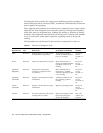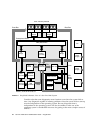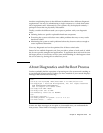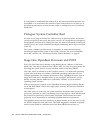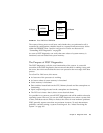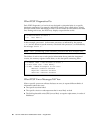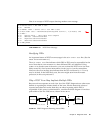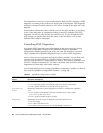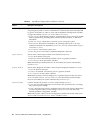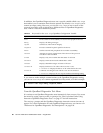
Chapter 6 Diagnostic Tools 79
FIGURE 6-2 Boot PROM and IDPROM
The extent of these power-on self-tests, and whether they are performed at all, is
controlled by configuration variables stored in a separate firmware memory device
called the IDPROM. These OpenBoot configuration variables are discussed in
“Controlling POST Diagnostics” on page 82.
As soon as POST diagnostics can verify that some subset of system memory is
functional, tests are loaded into system memory.
The Purpose of POST Diagnostics
The POST diagnostics verify the core functionality of the system. A successful
execution of the POST diagnostics does not ensure that there is nothing wrong with
the server, but it does ensure that the server can proceed to the next stage of the boot
process.
For a Sun Fire V490 server, this means:
■ At least one of the processors is working.
■ At least a subset of system memory is functional.
■ Cache memory is functional.
■ Data switches located both on the CPU/Memory boards and the centerplane are
functioning.
■ Input/output bridges located on the centerplane are functioning.
■ The PCI bus is intact—that is, there are no electrical shorts.
It is possible for a system to pass all POST diagnostics and still be unable to boot the
operating system. However, you can run POST diagnostics even when a system fails
to boot, and these tests are likely to disclose the source of most hardware problems.
POST generally reports errors that are persistent in nature. To catch intermittent
problems, consider running a system exercising tool. See “About Exercising the
System” on page 105.
IDPROM
variables
Boot
PROM
POST
2 Mbyte
s8
Kbytes
OpenBoot
firmware






